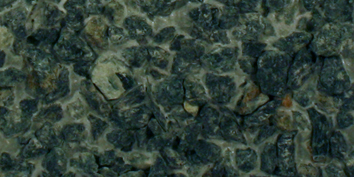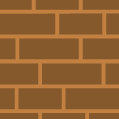 UnoFin Select Stone Finish OC CSIII W2
UnoFin Select Stone Finish OC CSIII W2

Decorative waterproof render for decoration and waterproofing of façades. For hand or pump application directly on the brick.
Additional information
Technical Caracteristics
Product based on high resistance cement, selected aggregates, special additives, pigments and synthetic resins.
Advantages and Uses
- To be applied directly on the brickwork. No need for a previous plastering.
- To be applied indoors and outdoors.
- Waterproof cladding.
- Permeable to water vapour, allowing the substrate to breathe.
- No cracking.
- Wearing resistant. Fading resistant.
- No paints necessary. Excellent façade finishes in just one application.
- Agregage projection finish
Suitable Substrates
- Conventional cement and brickwork based substrates.
- Substrates must be resistant, stable, sound and clean, free of dust, demolding agents, organic products, etc.
- In case of hot or windy weather conditions or when applying over absorbent substrates, it is advisable to wet the substrate and wait till the thin layer of water disappears.
- In particular points (union between different materials, top slabs, pillars, roller blind boxes, angles in the door and window frames, etc.), prepare the mortar with glass fibre mesh to avoid fissures.
- With low-porosity substrates, apply a priming coat (UNOFIN ANCILLARY PRIMER) or improve roughness by mechanical means.
- Do not apply on clay or on paint.
Application Procedure
MANUAL APPLICATION
- Add water and mix by hand or mechanically until it takes on an even and workable consistency.
- Spread the mixed product over the substrate with the use of a trowel.
- The mixture must be extended with a thickness of 12-15 mm, after marking the pieces by using PVC splines.
- It is advisable to apply a well compacted first layer of 2-3 mm to seal the substrate, and then spread the remaining material.
MECHANICAL APPLICATION
- Fix the optimum proportion water/mortar according to the chosen pump (section and hose length) and external weather conditions. Start with 20% proportion and modify it gradually until you achieve the appropriate consistency.
- It is important to maintain the same variables affecting the features of the applied mortar (distance to the wall, angle of application and water proportion).
FINISH
- Finish with projection of aggregate.
- Once the surface has been levelled and before the superficial coat is dry, apply the chosen aggregate and press with the trowel to achieve the same level for aggregates and mortar.
REINFORCEMENT MESH
Special areas where the coating suffers tensions derived from the structure or due to the meeting of materials of a different nature on the substrate. A suitable treatment for these areas consists of incorporating a reinforcing mesh embedded in the mortar, to reinforce it and prevent it from cracking.
Placing the mesh:
- Place a 10 x 10 mm fibreglass or anti-alkali treated mesh embedded in the mortar.
- The mesh must protrude at least 200 mm on each side of the joint between the different materials.
- The mesh is placed diagonally in pieces of 200 x 400 mm in corners.
- The mesh should be gobbled up by the mortar. If it is too close to the surface, it may come out when once the process is finished, and if it is too close to the substrate, it will not perform its task of “holding” the mortar well.
Recommendations
- Do not apply below 5ºC nor above 30ºC.
- In case of heavy heat, wind, or very absorbent substrates, it is advisable to moisten the substrate and wait until the water film is totally absorbed.
- Do not apply when there is a risk of frost, rain, strong wind or direct sunlight.
- An excess of water may increase shrinkage and reduce mechanical resistance.
- Because of the change in raw materials, the shades of the coloured mortars may vary slightly by batch.
- Stone to be projected should be dry and free of dust.
- The cladding must be interrupted at the level of the structural joints.
- It is not advisable to apply on horizontal or sloped surfaces.
- The application of render with different thicknesses (on joints with faulty seals or with excessive thickness) may cause visible imperfections, colour differences and cracks in the render.
- Zoning constitutes the guidelines of the plaster application; they facilitate application being the reference to achieve the desired thickness and eliminate joints.
- For a thickness of over 2 cm, it is advisable to apply the product in two coats.
- The final minimum thickness should be 10 mm.
- Protect the starting point of the plaster from capillary humidity placing a plinth at the base of the wall In exterior claddings, it is necessary to crown the cladding with an aileron or cushion system, rain awning or gutter to protect it from the rain.
- One-coat layers with dark tones are more prone to evidence irregularities: i) due to the fact that the primitive colour could deteriorate as a consequence of lime formation; and ii) because the render absorbs a larger amount of sun radiation, thus increasing thermal shrinkage Cleaning parapets and surfaces of cornices at least once a year.
- Cleaning the wall using pressurized water with neutral soap when the wall presents a significant degree of dirtiness due to pollution and the level of aesthetic deterioration advises it.
- In highly contaminated areas, this operation may be required every two to three years. The one-coat mortar is a finishing coat for façades so it must be applied at the end of the constructive process, following the required previous applications and protections.
- Its application should be performed properly so no significant repairs or restoration work have to be performed as a result of any possible damages that may arise.
CURING
- Between 5 and 30 °C, curing not required
- Between 30 and 35 °C, wetting the following day, 2 times per day.
- Between 35 and 45 °C, wetting the following 72 hours, 2 times per day.
Packaging and Storage
25 kg plastic-lined paper bags.
Shelf life: 1 year in sealed original packaging, sheltered from weather conditions and humidity.
Technical data
| Bulk density of powder mortar (kg/m3) | 1100 ± 100 |
| Density of paste (kg/m3) | 1550 ± 100 |
| Density of hardened mortar (kg/m3) | 1300 ± 100 |
| Mixing water(%) | 29 ± 3 |
| Water retention (50 mm of Hg, 5 min) (%) | ≥ 90 % |
| Capillarity (kg/m2 min1/2) | < 0,2 |
| Compression strength 28 days (MPa) | 5 - 8 |
| Flexural strenght 28 days (MPa) | 3 - 1 |
| Shrinkage (mm/m) 28 days | ≤ 1,2 |
| Adhesion (MPa) | > 0,3 |
| Classification according to UNE EN 998-1 | OC CSIII W2 |
| EFFICIENCY UNOFIN SELECT STONE FINISH | |
| AAC Blocks | 14 - 16 Kg/m2/cm |
| Red Bricks | 15 - 17 Kg/m2/cm |
| Concrete Surfaces | 14 - 16 Kg/m2/cm |
| EFFICIENCY STONE FINISH (Kg/m2) | 9-11 Kg/m2/cm |
| * The above yield may vary depending upon the several crucial factors, viz. substrate level, substrate condition, undulation, application thickness, etc. To ensure accurate and effective consumption, we strongly recommend conducting a mockup on site before final application. |
|
Legal Disclaimer
PIDILITE GRUPO PUMA is not responsible, in any case, for the application of its products or constructive solutions carried out by the application company or other parties involved in the process and / or execution of the work, limiting the responsibility of PIDILITE GRUPO PUMA exclusively to the damages directly attributable to the supplied products, individually or integrated in systems, due to failures in their manufacturing process.
In any case, the drafter of the work project, the technical management or the person responsible for the work, or collaterally the application company or other parties involved in the process and / or execution of the work, must ensure the suitability of the products addressing the characteristics of them, as well as the conditions, support and possible pathologies of the work in question.
The values obtained by PIDILITE GRUPO PUMA's products or its constructive solutions that, as the case may be, are determined by the EN standards or any other regulation that applies to it in each case refers exclusively to the conditions specifically stipulated in said regulation and that are referred to, among others, to certain characteristics of the support, humidity and temperature conditions, etc. without being them required in the tests obtained under different conditions, all in accordance with the relevant regulation.
Documents
Ranges
Colors in stock
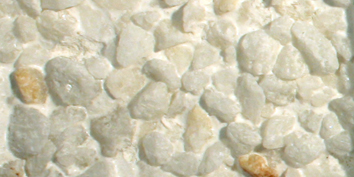
Blanco 000
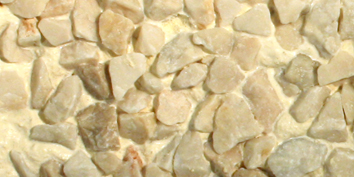
Almond Cream 010
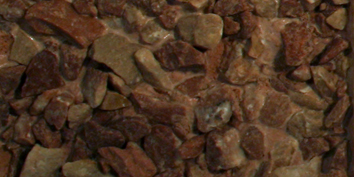
Brick Red 040
